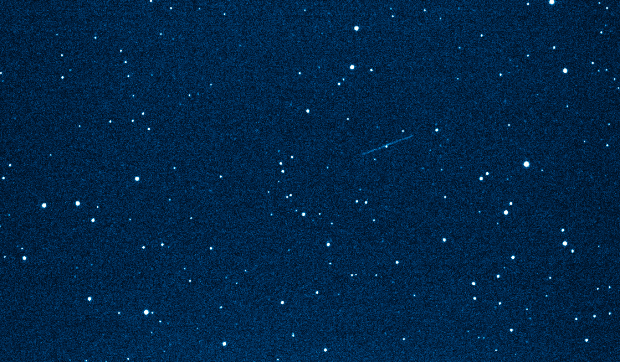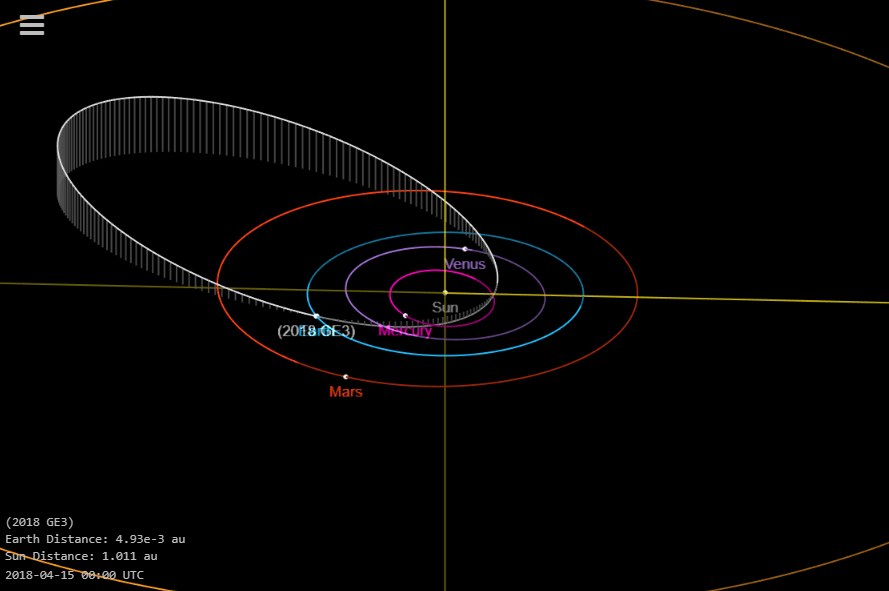'Tunguska'-Size Asteroid Makes Surprise Flyby of Earth
An asteroid similar in size to one that exploded more than 100 years ago in Russia's Tunguska region in Siberia gave Earth a close shave on Sunday (April 15), just one day after astronomers discovered the object.
The asteroid, designated 2018 GE3, made its closest approach to Earth at around 2:41 a.m. EDT (0641 GMT), whizzing by at a distance of 119,400 miles (192,000 kilometers), or about half the average distance between Earth and the moon, according to NASA's Center for Near Earth Object Studies (CNEOS).
NASA estimated that this asteroid measures 157 to 360 feet (48 to110 meters) wide, making the space rock up to 3.6 times the size of the one that leveled 500,000 acres (2,000 square kilometers) of Siberian forest when it exploded over Tunguska in 1908. [Gallery: Potentially Dangerous Asteroids]
This newfound asteroid is three to six times as big as another recent meteor, the one that broke up over Chelyabinsk, Russia, in 2013. That object injured more than 1,200 people and damaged thousands of buildings up to 58 miles (93 km) away from the impact site.
"If 2018 GE3 had hit Earth, it would have caused regional, not global, damage, and might have disintegrated in the atmosphere before reaching the ground," SpaceWeather.com reported. "Nevertheless, it is a significant asteroid, illustrating how even large space rocks can still take us by surprise. 2018 GE3 was found less than a day before its closest approach."
The asteroid 2018 GE3 was first spotted on Saturday (April 14) at 5:23 a.m. EDT (0923 GMT) by astronomers at the Catalina Sky Survey, a NASA-sponsored program based at the University of Arizona in Tucson. This first sighting occurred just 21 hours before the asteroid's closest approach to Earth.
Email Hanneke Weitering at hweitering@space.com or follow her @hannekescience. Follow us @Spacedotcom, Facebook and Google+. Original article on Space.com.
Breaking space news, the latest updates on rocket launches, skywatching events and more!

Hanneke Weitering is a multimedia journalist in the Pacific Northwest reporting on the future of aviation at FutureFlight.aero and Aviation International News and was previously the Editor for Spaceflight and Astronomy news here at Space.com. As an editor with over 10 years of experience in science journalism she has previously written for Scholastic Classroom Magazines, MedPage Today and The Joint Institute for Computational Sciences at Oak Ridge National Laboratory. After studying physics at the University of Tennessee in her hometown of Knoxville, she earned her graduate degree in Science, Health and Environmental Reporting (SHERP) from New York University. Hanneke joined the Space.com team in 2016 as a staff writer and producer, covering topics including spaceflight and astronomy. She currently lives in Seattle, home of the Space Needle, with her cat and two snakes. In her spare time, Hanneke enjoys exploring the Rocky Mountains, basking in nature and looking for dark skies to gaze at the cosmos.


